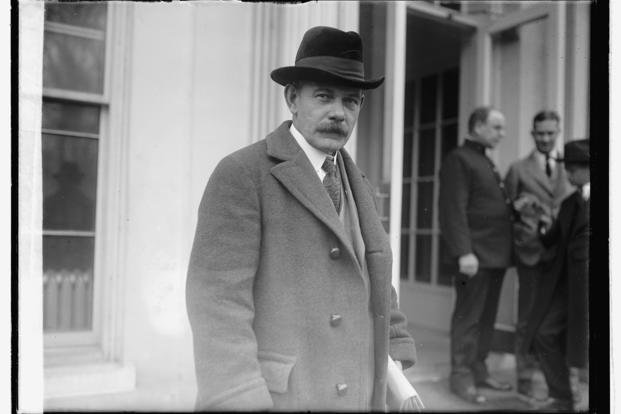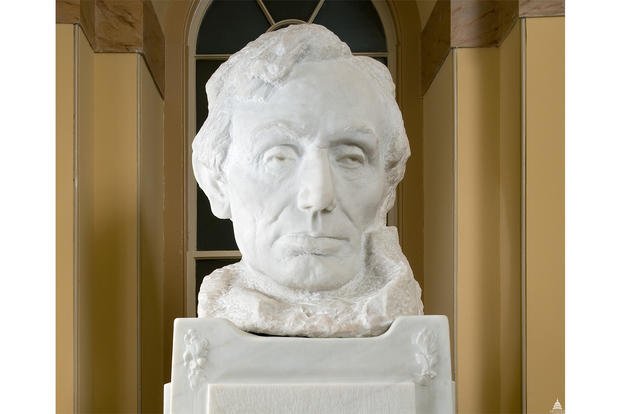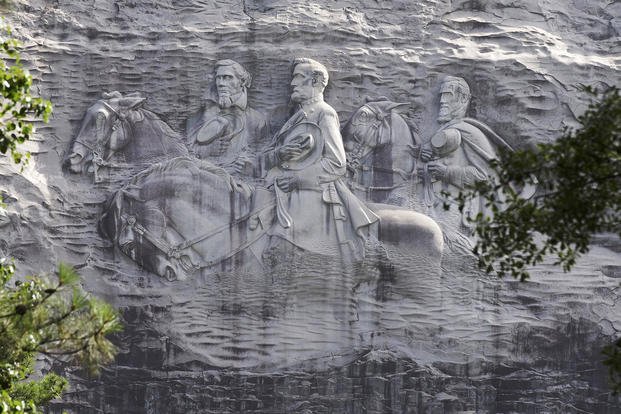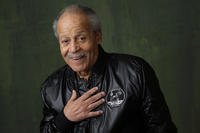In late 1924, a rare opportunity presented itself to Gutzon Borglum. At the time, the American sculptor found himself on the verge of being fired from his job carving a Confederate monument into the side of Stone Mountain in Georgia amid repeated clashes with his bosses, a fair share of which were his own making.
Irritated, Borglum packed his bags and traveled to a remote location in South Dakota. He was intrigued by what he saw in the Black Hills; more importantly, he was highly motivated. “I want the vindication it would give me,” he said at the time.
Eager to drive tourism to the relatively new state, South Dakota’s official historian envisioned sculpting figures from the American West into one of the state’s many majestic mountainsides. A big thinker with grandiose dreams and an ego to match, Borglum suggested a tableau to American history that would feature the visages of prominent United States presidents. After scouting various mountains for the project, he found the perfect canvas: Mount Rushmore.

Crafting one of the most recognizable fixtures of the American landscape was just one milestone in Borglum's unusual life. Born in 1867 in Idaho, Borglum was the son of a Danish Mormon immigrant who was married to Gutzon’s mother and her sister, and the boy lived in a polygamous household until he was 5 years old. Borglum grew up primarily in Nebraska, and after the family moved to California, he received his first break as an artist when he painted a portrait of Gen. John C. Frémont, the renowned former Union Army officer, in 1888.
Along with his first wife, Elizabeth Putnam (a painter 18 years his senior), Borglum traveled to France to work and continue learning his craft, struck up a friendship with Auguste Rodin (“The Thinker”) and shifted his focus to sculpting -- perhaps to compete with his brother, Solon. The couple traveled throughout Europe for much of the 1890s before returning to the United States, where Borglum found success after creating a marble bust of Abraham Lincoln, which remains on display at the U.S. Capitol today.

In 1915, Borglum’s profile changed dramatically when the United Daughters of the Confederacy -- an organization that formed in 1894 and advanced the “Lost Cause” narrative of why the South lost the Civil War -- contacted him about sculpting the image of Gen. Robert E. Lee onto Stone Mountain. Borglum did not want to stop there, instead suggesting carving Confederate generals leading an army of soldiers into the rock face.
Borglum and his crew did not begin work on the project, which received financial support from the Ku Klux Klan, until 1923 because of World War I and funding issues. They only got to work on the mountain for a relatively short time before Borglum, a perfectionist with a prickly personality, was let go; what sculpting they had done was blasted off and is not part of the present-day memorial, which was finally completed in 1972.

Despite how Stone Mountain ended for him, Borglum took away a valuable lesson from the experience: how to use dynamite to make carvings more precise. Borglum and his crew began work on Mount Rushmore in 1927, and they used explosives to great effect, with dynamite carving 90% of the mountain.
Each presidential image -- from left, George Washington, Thomas Jefferson, Theodore Roosevelt and Abraham Lincoln -- is 60 feet tall. Washington’s face was the first to be completed, in 1934; Jefferson’s image followed two years later, with Lincoln being completed in 1937 and Roosevelt in 1939.
For such a massive endeavor, there were some expected snags, including changing the placement of Jefferson’s head from the right to the left of Washington, because the stone in its original location was deemed too weak. Workers on the Mount Rushmore memorial were sidelined for long stretches because of a lack of finances, unfavorable weather or both. By the time that Congress ceased work on the Mount Rushmore National Memorial on Oct. 31, 1941, nearly eight months after Borglum died at the age of 73, the monument had cost nearly $1 million and displaced 800 million pounds of rock.
Borglum left behind a complicated legacy.
“No one could get along with Mr. Borglum for any length without losing his temper -- unless one was a saint, and there are few human saints,” former South Dakota Gov. William J. Bulow once said in an article originally published in 1947.
Beyond Borglum’s sometimes boorish behavior, some also regarded him as a racist, and not only because of the KKK’s connection to the Stone Mountain memorial. He once referred to immigrants as “slippered assassins” and was known to have attended KKK meetings and espoused racist views, according to John Taliaferro, author of the 2002 book, “Great White Fathers: The True Story of Gutzon Borglum and His Obsessive Quest to Create Mount Rushmore.”
“He never came out and said he was a member of the Klan, but he sure was at the table with them a lot,” Taliaferro told The Washington Post in 2020.

It wasn’t only Stone Mountain that was steeped in controversy, either. From the time that the first rock was blasted or chiseled at Mount Rushmore, that project was confronted with charges of racism from Native Americans upset that Borglum’s crews were chipping away on land they regarded as sacred. They considered Borglum no friend of theirs, a well-founded belief reinforced by the sculptor reportedly once saying, per a 2016 Smithsonian Magazine article: “I would not trust an Indian, off-hand, nine out of 10, where I would not trust a white man one out of 10.”
Native Americans’ concerns, however, have done little to quell the popularity of Mount Rushmore. Even as some Native leaders continue to speak out against the memorial, one even suggesting in 2021 that it be converted into something akin to a U.S. Holocaust Museum, the U.S. National Park Service reported that one of America’s most recognizable landmarks attracted more than 2.4 million visitors in 2023.
A century later, the controversial Borglum might have considered that level of popularity vindication enough.
Want to Know More About the Military?
Be sure to get the latest news about the U.S. military, as well as critical info about how to join and all the benefits of service. Subscribe to Military.com and receive customized updates delivered straight to your inbox.
















